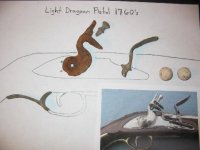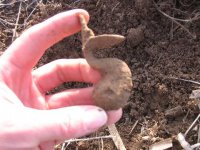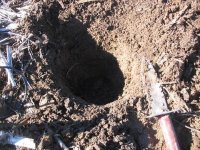kcsteve
Established Users
Found a cool looking flintlock piece 2 days ago. I have found 3 other brass pieces that I think might go to the same weapon. I'm trying to date the pieces based off of pictures found on the Internet. I drew a pic of the flintlock pistol to show where I think they go and also posted a pic of the pistol that I think resembles the pieces. I'm thinking this flintlock might possibly date back to about the 1760's. It might have gone to a British Light Dragoon (Cavalry) pistol. This is the closest match I could find. Sure is fun trying to match and put the pieces together to unravel the mystery.
I wish everyone a wonderful Merry Christmas!
I wish everyone a wonderful Merry Christmas!






